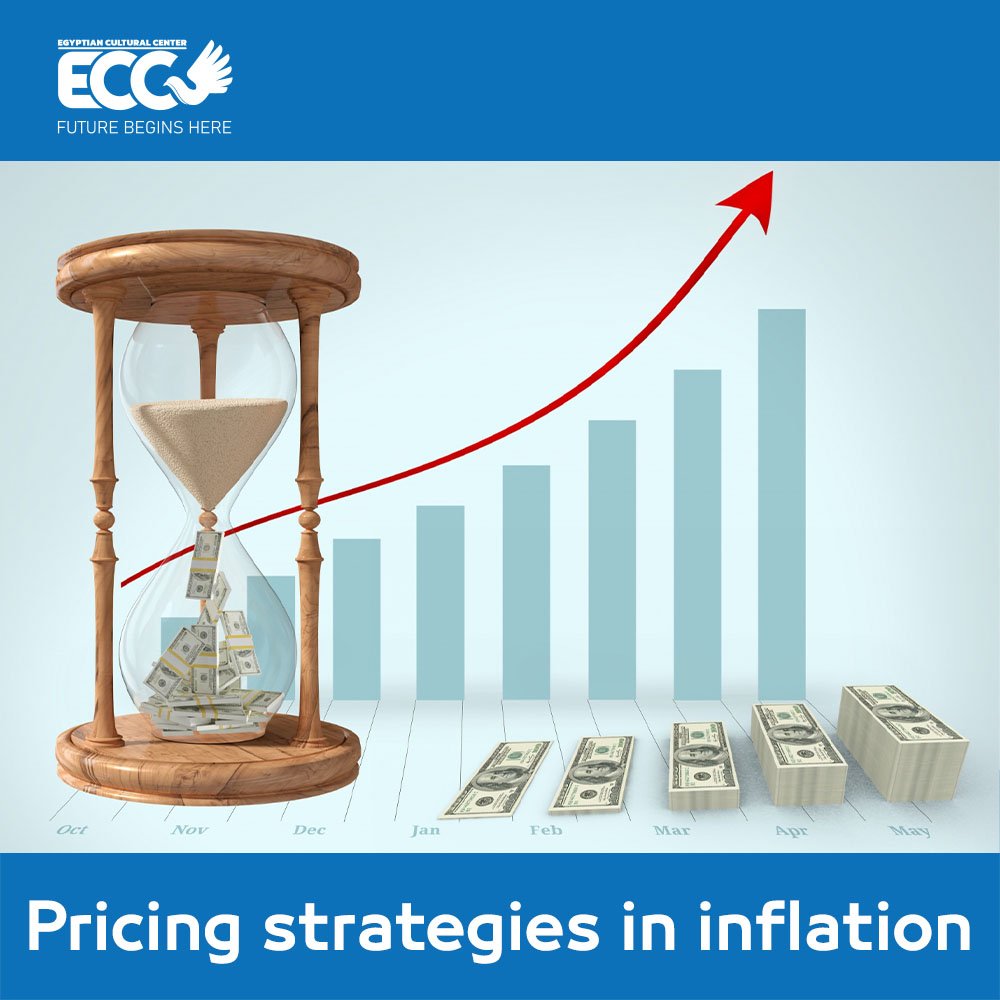In a market economy, the prices of goods and services are always changing, and this happens as a result of accelerated changes in local or global inflation rates, thus affecting companies and markets. According to IMF forecasts, inflation will reach 6.5% in 2023 …But what is inflation, How does it affect companies and markets, and how do companies address or respond to it in their different strategies. This is what we will touch on in our article.
What is Inflation?
Inflation is a constant increase in the general level of prices for goods and services in the economy over some time. It usually indicates this year’s prices, compared to the previous year’s prices for him. Inflation is the gradual or sudden decline in the value of money.
The more general level of prices rises, the less amount of money you have that can buy a smaller percentage of goods and services, which is called purchasing power.
so purchasing power is the number of actual goods and services that you can buy at a certain time, so inflation reflects a decrease in the purchasing power of money, which occurs when an increase in the cost of production leads to an increase in the general level of prices.
Causes of inflation
Inflation generally occurs due to an imbalance between money in circulation and the availability of goods or services we need. Several factors lead to the occurrence of inflation, namely
- Increased demand: when there is a severe shortage of supply, the demand for goods and services increases, which in turn leads to higher prices, as companies in that period have the bargaining power to raise prices.
- Increased production costs: when there is an increase in the cost of production, such as the cost of raw materials or labor, enterprises may need to raise prices to maintain profitability.
- Monetary policy: central banks can also contribute to inflation by printing too much money, which can lead to an increase in the overall level of prices.
- Government spending: when governments spend more money than they collect in taxes, this can lead to inflation as an increase in the money supply leads to higher prices.
How inflation affects the markets?
Inflation can have a significant impact on the markets. When the inflation rate rises, the cost of doing business for companies increases as inputs such as raw materials and labor increase. On the other hand, this leads to more consumers spending more money to buy the same goods and services, as consumers have less income to spend and therefore less demand for goods and services.
In the stock market, inflation can also affect the valuation of companies. As the cost of goods and services rises, companies may experience a decrease in profits, which can lead to a decrease in the price of their shares. Moreover, when interest rates rise as a result of inflation, it can also negatively affect the stock market, as it can make bonds more attractive to investors and reduce the attractiveness of stocks.
In the bond market, inflation can also affect bond prices. When inflation is high, bondholders expect to receive higher interest payments in the future. As a result, bond prices fall as the interest rate on new bonds increases, which can lead to a decrease in bond prices.
Pricing strategies during inflation
Companies may use various pricing strategies to maintain profitability and remain competitive during periods of inflation.
1 – Cost-plus pricing model
The Cost-plus model is one of the most used strategies in high-inflation situations where prices are raised in line with the inflation rate. This helps to maintain the company’s profit margins and compensate for the increasing costs of goods and services. However, this approach can also lead to a decrease in demand if consumers find prices too high compared to the competition.
2-the strategy of selective price increases
In times of high inflation, it can be useful to divide your products into flagship products and products with a profit margin. Where the prices of some products or services are raised while others are left unchanged. This way you can continue to attract customers with cheaper prices for their favorite products, but at the same time you can make more profit on other items by setting margins much higher than inflation. But this is done to target specific market segments or to protect higher-margin products.
3-the strategy of absorbing the growing costs
This strategy is done by reducing margins or costs elsewhere in the business. This can be done through cost-saving measures such as lowering overheads or increasing efficiency.
4-competitive pricing model
In that strategy, prices are built based on competition. For example, always provide the average price available in times of inflation or when your competitors make price changes. This way you can continue to distinguish yourself from the competition in full line with the company’s goals.
5-dynamic pricing model
For many companies, a dynamic pricing model is the best option in times of inflation, especially if the company has a lot of different products. This model automatically adjusts prices based on changes in various factors. For example, an increase in costs, or competitors ‘ prices can be included in a dynamic pricing model. Through the use of artificial intelligence software and algorithms, this model saves you a lot of trouble. The work is done for you, and you also get the best price for your product!
6-fixed-prices strategy
Some companies may choose to keep their prices but offer promotions or discounts to attract customers. This can help maintain demand and market share while still generating revenue.
In general, in times of high inflation, Companies can be under pressure from rising production costs and inflation rates, but the pricing strategy chosen by the company depends on the nature of the products or services provided and the level of competition in the market. It is important that companies carefully consider their options and monitor the impact of their pricing decisions both on them and on their industry to ensure profit generation and achievement of the organization’s goals


